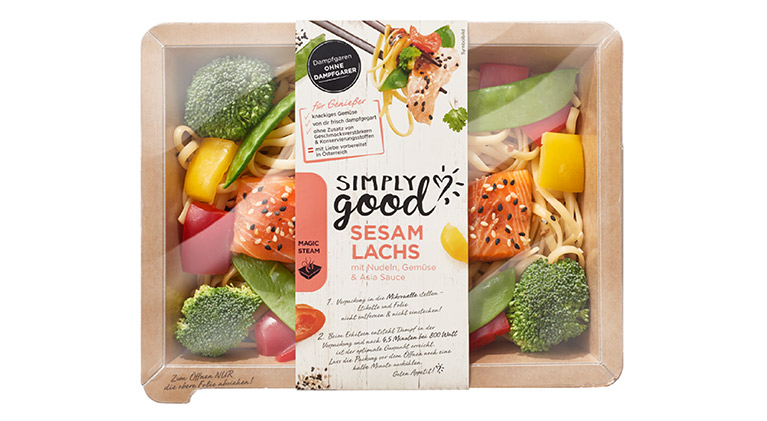The many capabilities of the tray sealer are helping manufacturers meet the opportunities and challenges of the convenience food market, explains Tony Burgess, Head of Sales & Control Systems at Proseal.
Fueled by today’s busy lifestyles, the convenience retail food market remains fast-moving and competitive. According to Statista, the US market specifically is expected to grow annually by 2.5% (CAGR 2019-2023). For manufacturers, this offers plenty of opportunities – but plenty of challenges as well.
Although consumers require the convenience of ready-prepared or ready-to-cook foods, equally there must be no compromise on quality or freshness. In addition, in today’s far more environmentally conscious world, the choice of pack format can have an influence on purchasing habits. Meanwhile, markets remain extremely competitive.
All of this means that food producers have to balance new product development with the continual production of established favorites, while exploring more sustainable packaging options for their products. They need also to maximize efficiencies and throughput and deliver the highest quality.
With top-sealed trays continuing to be the preferred format for so many different convenience products, the role of the tray sealer remains crucial in helping manufacturers meet these various requirements, and equipment suppliers are continuing to develop and enhance the technology to support this.
While recent media scrutiny has led to something of a backlash against plastic packaging, it has to be remembered that the material still has many benefits in the food sector, particularly its ability to help reduce food waste, which is widely acknowledged as a far greater problem than packaging waste in terms of its impact on the environment.
More importantly, packaging manufacturers have already taken steps to minimize the impact of their packs, with lighter weight trays that still have the strength and robustness to withstand the supply chain. We have therefore responded with machines that are able to handle these trays efficiently at high speeds.
Just as significant, in the soft fruit sector, the move from clamshell and clip-on lids to simple, thin, top-sealed film has led to material savings of up to 45%. This has provided important environmental benefits, such as material reduction, and valuable cost-savings. In addition, the use of pre-printed film reduces the need for labels and application equipment, further narrowing unnecessary expenses. A sealed lid also makes the pack tamper evident.
In markets such as ready meals and pre-prepared fresh foods, alternatives to plastic are now being introduced in various forms of paper and pulp. As well as coping with these different formats, some tray sealers are able to offer many different types of sealing technologies in addition to traditional atmospheric sealing. This enables them to deliver effective product protection and extend shelf-life, thereby also helping to reduce food waste. Examples include Gas Flush, Hermetic Shrink, Vacuum, Skin Pack, Skin Plus, and Skin Deep.
Certain tray sealer models are also equipped to seal various pack types on the same machine, providing food producers with the flexibility to easily switch between trays during normal production with minimal downtime, and to confidently run trial packs. Another vital element is the future-proofing of tray sealers with machines designed to be able to incorporate the latest developments and enhancements, enabling manufacturers to keep up to date with new trends and respond to ever-changing market requirements without the need to invest in new machines each time.
Tray sealers’ ability to help reduce food waste is not just an important environmental benefit; according to AIPIA (Active and Intelligent Packaging Industry Association) a typical food retailer can increase profits by 17% through cutting food waste from 2% to 1.5% of volume.
Tray sealing offers many additional advantages to the food sector. In terms of increasing efficiencies, our own Eseal® technology, for example, provides a 92% reduction in energy while delivering the quality and effectiveness of seal demanded by retailers that helps to maintain the quality of products.
The tray sealer can also act as what we at Proseal have established as ‘The Spine of the Line’, integrating all other components to be driven through its operating screen and tailored to the precise needs of individual products to help maximize throughput. Having an integrated and centrally-controlled line means that in the event of a problem, the tray sealer is able to flag an error and pass a stop signal to the feeding equipment. This ensures that the line can come to a controlled stop in order to avoid overfeeding of the tray sealer and prevent unnecessary product or packaging waste. Continual online monitoring also enables the tray sealer to collect data on small but unscheduled line stoppages, which can help production managers and engineers identify recurring problems and implement corrective action to maximize line uptime.
The retail food market remains as challenging as it is full of opportunities. In such a constantly changing and developing market, the tray sealer’s ability to help manufacturers respond quickly to the latest trends in both product and pack format while maintaining high efficiencies can make all the difference to a business’s success and growth.

